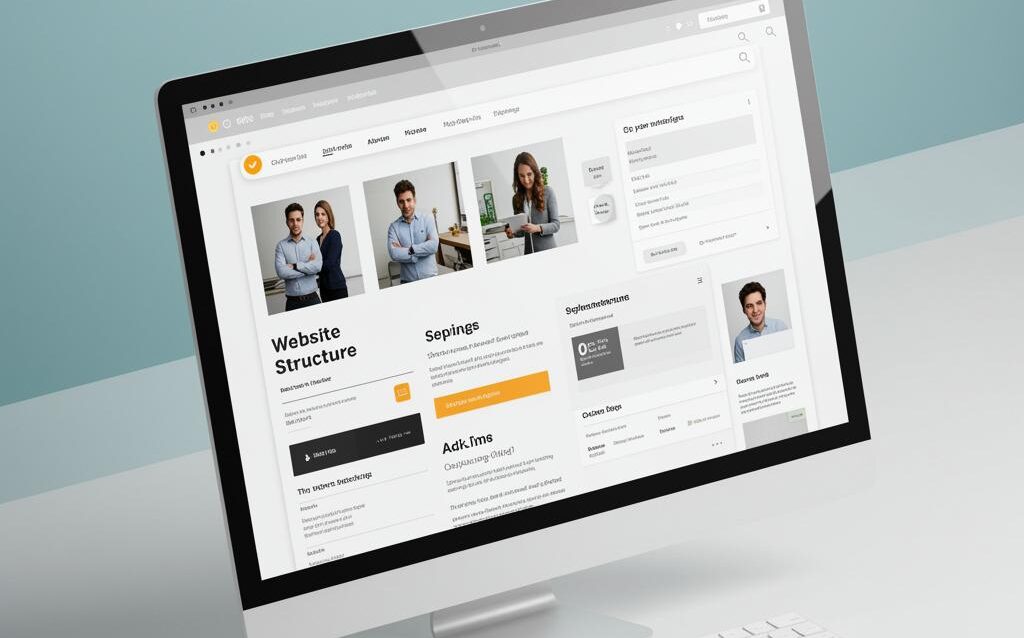Website Content Layout & Structure: Best Practices
Best Practices for Website Content Layout and Structure
A well-structured website is crucial for user engagement and achieving your online goals. Effective content layout guides visitors seamlessly through your information, enhancing their experience and encouraging them to explore further. This post delves into best practices for optimizing your website’s content layout and structure for maximum impact.
Visual Hierarchy and User Scanning
Users rarely read web pages word-for-word; they scan. Understanding this behavior is fundamental to effective content layout. By strategically using visual cues, you can guide their eyes to the most important information.
Heading Hierarchy (H1-H6)
Use headings to create a clear structure and highlight key sections. This not only improves readability but also helps search engines understand your content.
Whitespace and Breathing Room
Avoid overwhelming users with dense blocks of text. Ample whitespace around elements makes content more digestible and visually appealing.
Emphasis with Bold and Italics
Use strong tags for important keywords and em tags for emphasis and subtle highlighting.
Navigation and User Flow
Intuitive navigation is paramount for a positive user experience. Visitors should easily find what they’re looking for without frustration.
Clear and Concise Menu
Keep your main menu simple and focused on essential pages. Avoid cluttering it with too many options.
Internal Linking
Strategically link related pages within your website. This improves navigation and helps users discover more relevant content.
Breadcrumbs
Breadcrumbs provide a visual trail, showing users their current location within the site hierarchy. This is particularly helpful on larger websites.
Mobile-First Approach
With the increasing dominance of mobile browsing, designing for smaller screens is no longer optional, it’s essential.
Responsive Design
Ensure your website adapts seamlessly to different screen sizes and devices, providing a consistent experience across platforms.
Touch-Friendly Elements
Buttons and links should be large enough to be easily tapped on touchscreens. Avoid elements that are too small or close together.
Content Chunking and Readability
Breaking down large blocks of text into smaller, digestible chunks improves readability and comprehension.
Short Paragraphs
Keep paragraphs concise and focused on a single idea. This makes the content easier to scan and absorb.
Bulleted and Numbered Lists
Use lists to present information in a clear and organized manner.
- Unordered lists (bulleted) are ideal for items without a specific order.
- Ordered lists (numbered) are best for sequential information or steps in a process.
Visuals and Multimedia
Incorporate images, videos, and infographics to break up text and enhance engagement. Visuals can communicate complex information quickly and effectively.
Accessibility Considerations
Designing for accessibility ensures that your website is usable by everyone, including people with disabilities.
Alt Text for Images
Provide descriptive alt text for all images. This allows screen readers to convey the image’s content to visually impaired users.
Sufficient Color Contrast
Ensure sufficient contrast between text and background colors for readability, particularly for users with low vision.
Keyboard Navigation
Make sure all interactive elements are accessible using a keyboard, enabling users who cannot use a mouse to navigate your website.
Conclusion
Implementing these best practices for website content layout and structure will significantly improve user experience, engagement, and ultimately, the success of your online presence. By prioritizing clear navigation, mobile responsiveness, readability, and accessibility, you create a website that is both user-friendly and effective in achieving its intended purpose.

